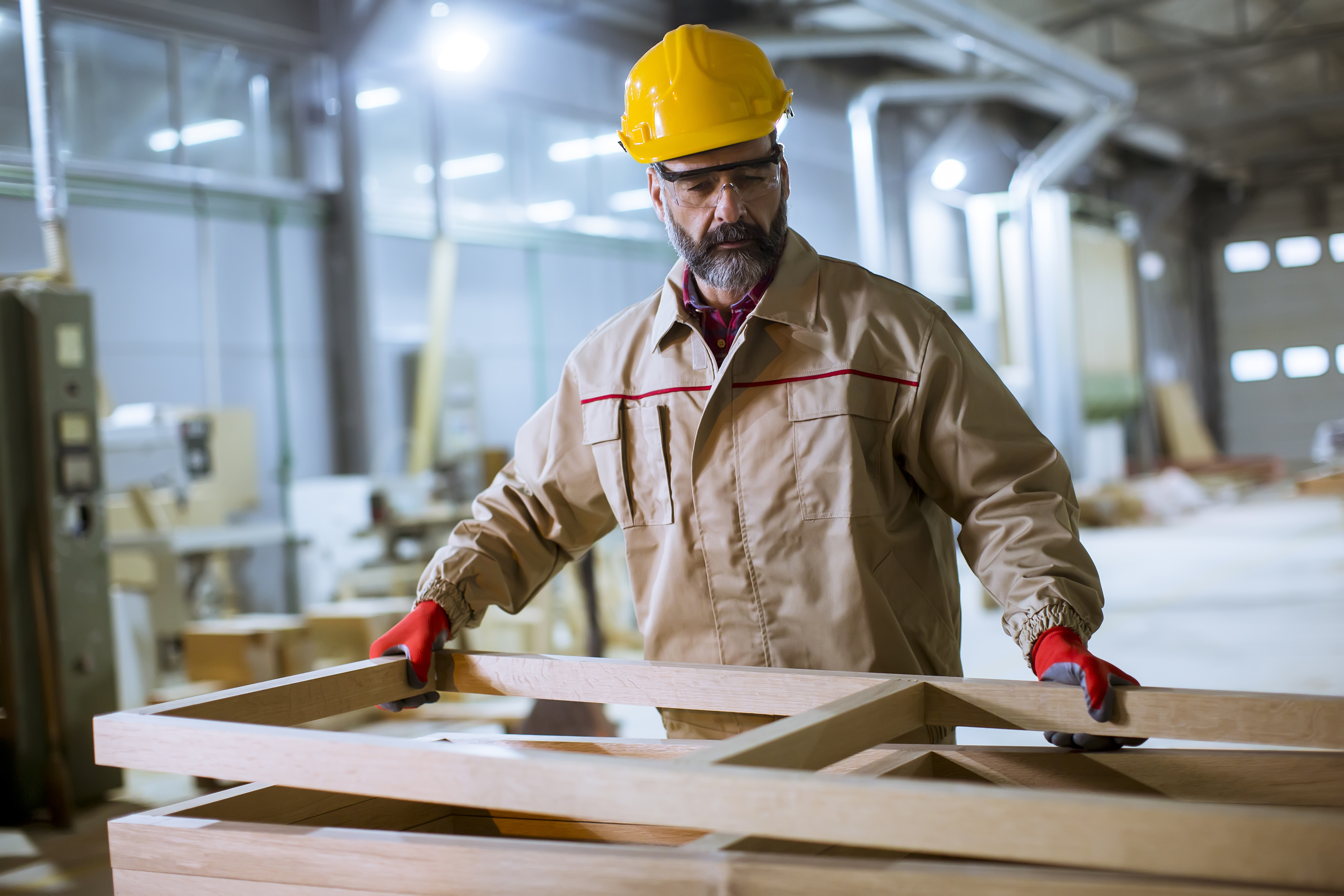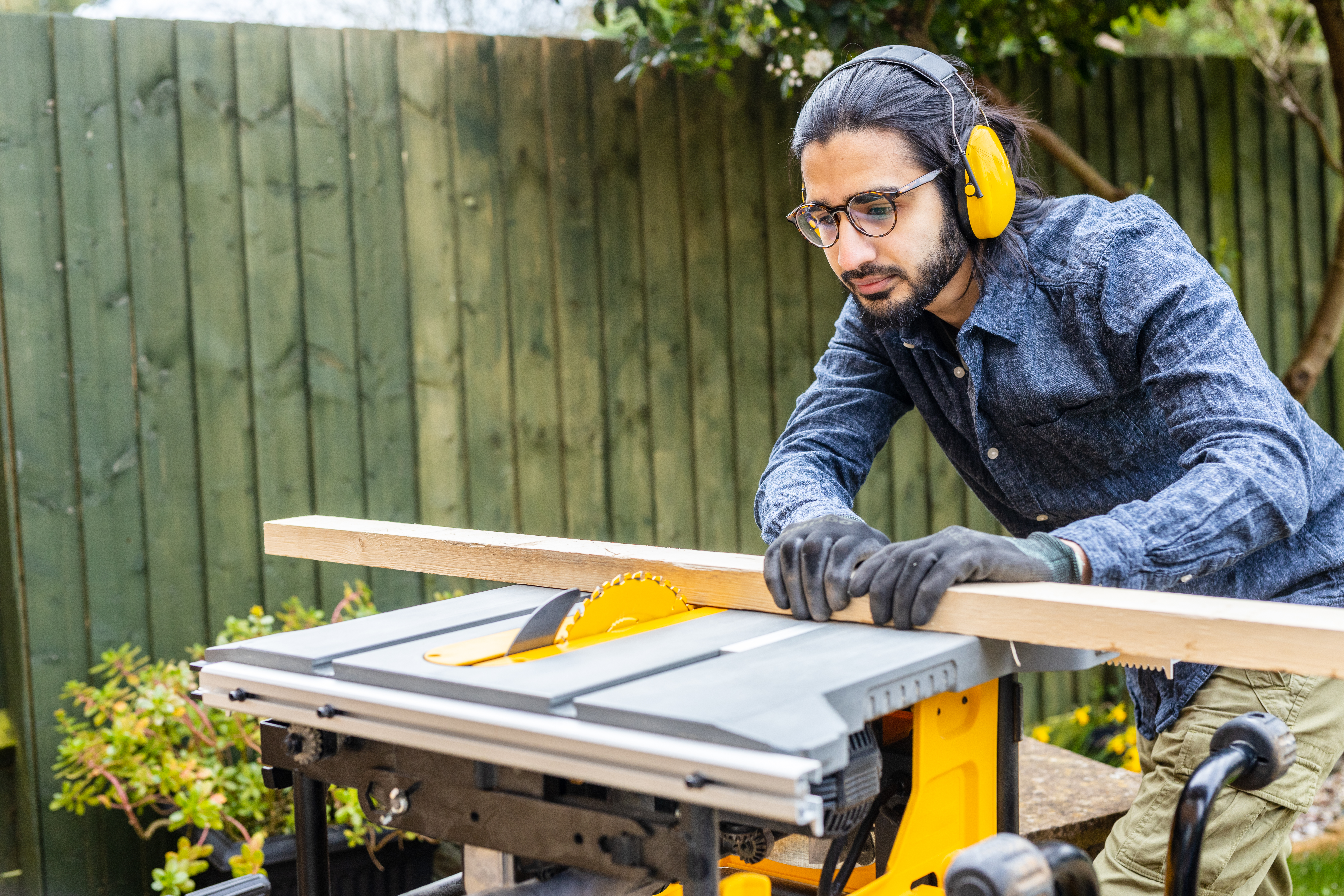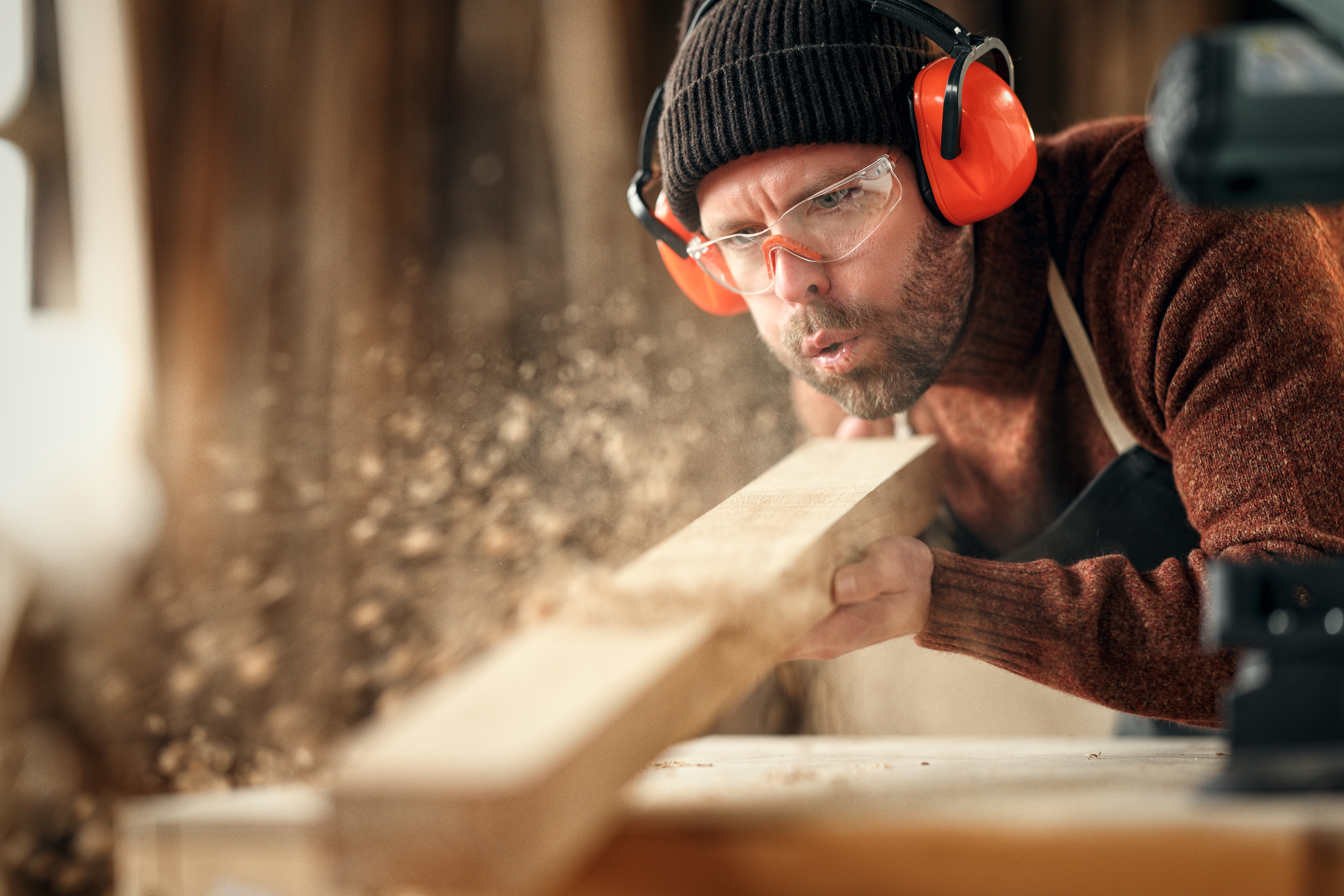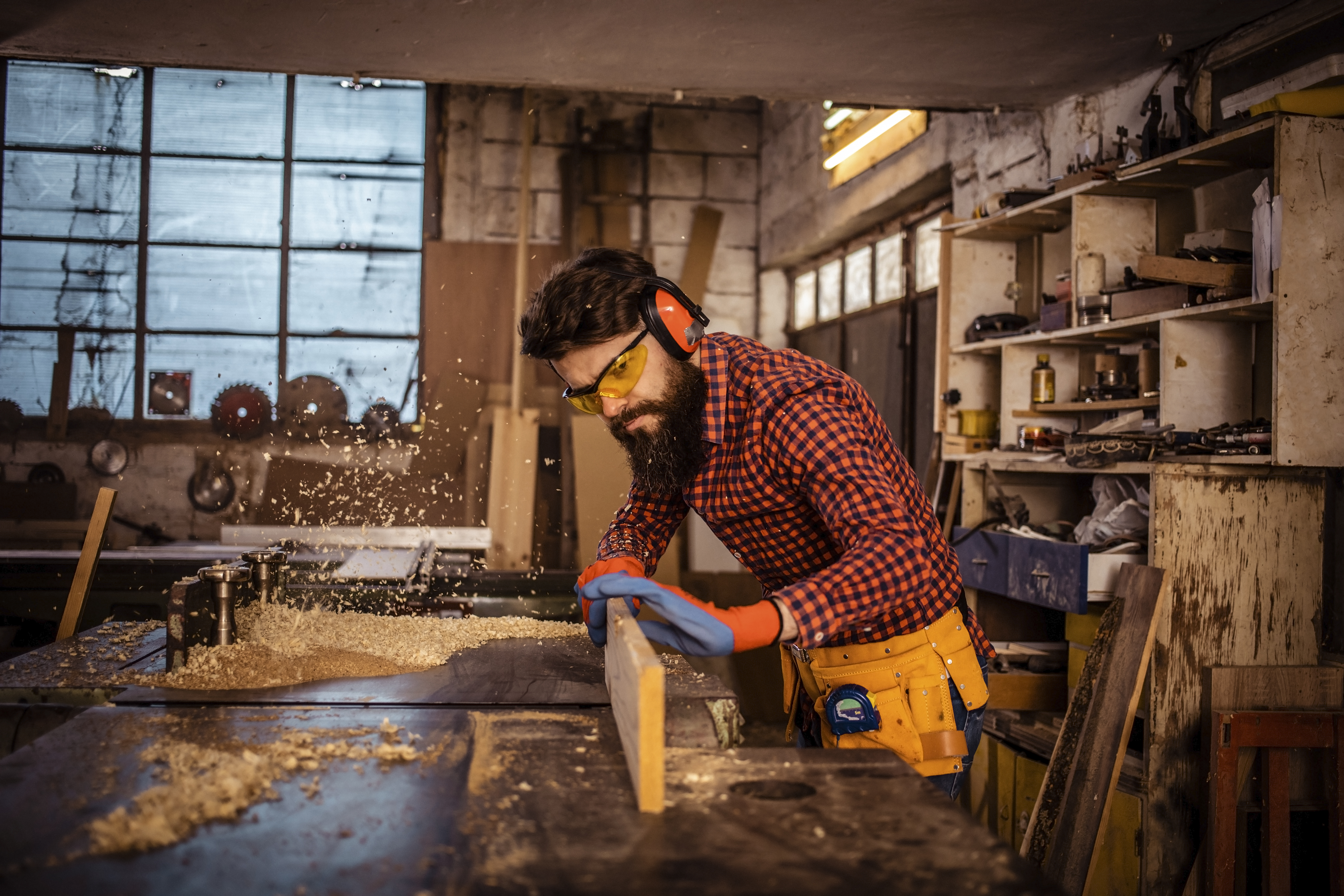Joinery: it’s that timeless trade that’s kept humans building for millenia. However, whilst woodworking represents essential work, it also represents work that’s fraught with risks; from fire hazards and tripping obstacles to harmful substances, sharp tools and everything in-between. We’re standing up for safer woodworking with some simple, yet effective advice on maintaining a healthy and hazard free workshop.
Before we explore our safe workshop advice in detail, let’s take a look at some of those immediate steps that TensorGrip customers can take to minimise risks on-the-job, particularly when using our adhesives.
- Undertake air monitor tests;
- Always wear PPE, including gloves, goggles and face masks;
- Ensure high air flow; and
- Spray from the waist.
By taking these simple measures, woodworkers can mitigate many of the risks associated with DCM-based adhesives, which can present a number of adverse health effects if used improperly (for more advice on using DMC adhesives safely, click here).
Whilst wearing PPE and ensuring strong air flow will mitigate a number of health risks, taking those measures won’t do anything to prevent the risk of fires, falls and workplace injuries. Keep reading to learn how you can take strong steps towards maintaining a safer workshop!
How to Create a Safe Joinery Workshop
Workshops are busy, bustling workplace environments that are often filled with hidden dangers. By following these simple steps, our customers can reduce risks to themselves, their colleagues and their tools. Check them out!
1. Get the Right Threads

When you rock into work on a Monday morning, the last thing you want to do is take part in a fashion show. However, choosing the right kind of wardrobe can make that critical difference between a safe day at work and one that ends in disaster. Always remember: when it comes to safe joinery work, fashion does matter.
Forget baggy hoodies and loose t-shirts. Loose-fitting clothing is far more likely to get caught up inside machinery, presenting a significant risk to you and your workmates. Fundamentally, you’ll want to choose clothing that protects you from woodchips and other debris whilst not presenting that risk of getting entangled in saw blades or cutting heads.
Our safe joinery fashion advice doesn’t end there. Always remember to tie long hair back, and don’t forget to leave your jewellery at home (unless you’d like to lose a finger).
2. Before Changing Blades, Always Unplug
Whilst this piece of advice may seem obvious, it is necessary to repeat given the sheer prevalence of injuries the industry sees year-on-year. Before changing bits and blades (or any element of heavy machinery), always stop and remind yourself to UNPLUG all of those tools via the mains.
Servicing or changing any power tool that’s still switched on and connected to the mains is extremely dangerous, and you should always consider a plugged in tool as a running tool. So - always make sure you switch off by unplugging your tool’s primary cord or by shutting off the breaker at the power source (you can also ‘lock out’ the power for an extra layer of safety).
3. Examine Wood for Traces of Metal

Here at TensorGrip Joinery Adhesives, we understand that reclaimed and repurposed wood is a highly sought-after building material. However, when using old wood, joiners should expect to encounter dangerous things lurking inside: nails. If your saw makes contact with an old nail inside your wood, it can ruin your sawblade or worse, causing significant injury to you or your workmates.
So, take our advice when using wood: always check what you’re working with for traces of metal, including nails. Whilst a visual inspection works fine, we’ve seen joiners be extra precautious by giving their timber a scan with a metal detector. When it comes to protecting yourself against flying nails, every little helps!
4. Exercise Extreme Caution with Machinery

Machinery is a beautiful thing. Not only does it offer the power you need to finish a job quickly and to a high standard: it also packs enough power and metal to cause you a serious and even life-changing injury. To quote one of our favourite superheroes: “with great power comes great responsibility”.
When using heavy machinery, always make sure you’re working in an environment that’s free from distractions, and never be tempted to reach over a running blade. Never work when you’re tired, always ask for help when you need it and keep workpieces clamped down firmly to avoid the risk of accidents and injuries. Always take time to read the manual before getting to work, and keep the blade cover on your saws whenever possible. It also pays to use push sticks or pads when using a table saw, bandsaw, sharpener or joinery - they aren’t expensive and they have the potential to save your skin if things ever go wrong.
5. Aim for a Sawdust-Free Environment

A dirty, dust-ridden workshop is no joke - especially if you trip on that debris and cause yourself or your colleagues. Keeping a clean woodworking space is the mark of an expert joiner.
Whilst sawdust is an inevitable byproduct of being a joiner, it’s important to remember that it does present a number of health risks, including creating a risk of falling or slipping; inhaling it into your respiratory system and even getting into your eyes and hindering your vision.
Take our advice: clear up that sawdust before that pile starts to become imaginable. Your lungs and your workshop will thank you for it!
Stand Up for Safer Joinery with TensorGrip
As a brand of Quin Global, we’re passionate about innovating to create a safer joinery landscape for everyone - and that starts with our commitment to engineering cleaner, less harmful adhesives. To view our full range of joinery adhesives, click here. Alternatively, contact us or reach out directly to UK Category Sales Manager Gregg Rhodes via gregg.rhodes@quinglobal.com.
